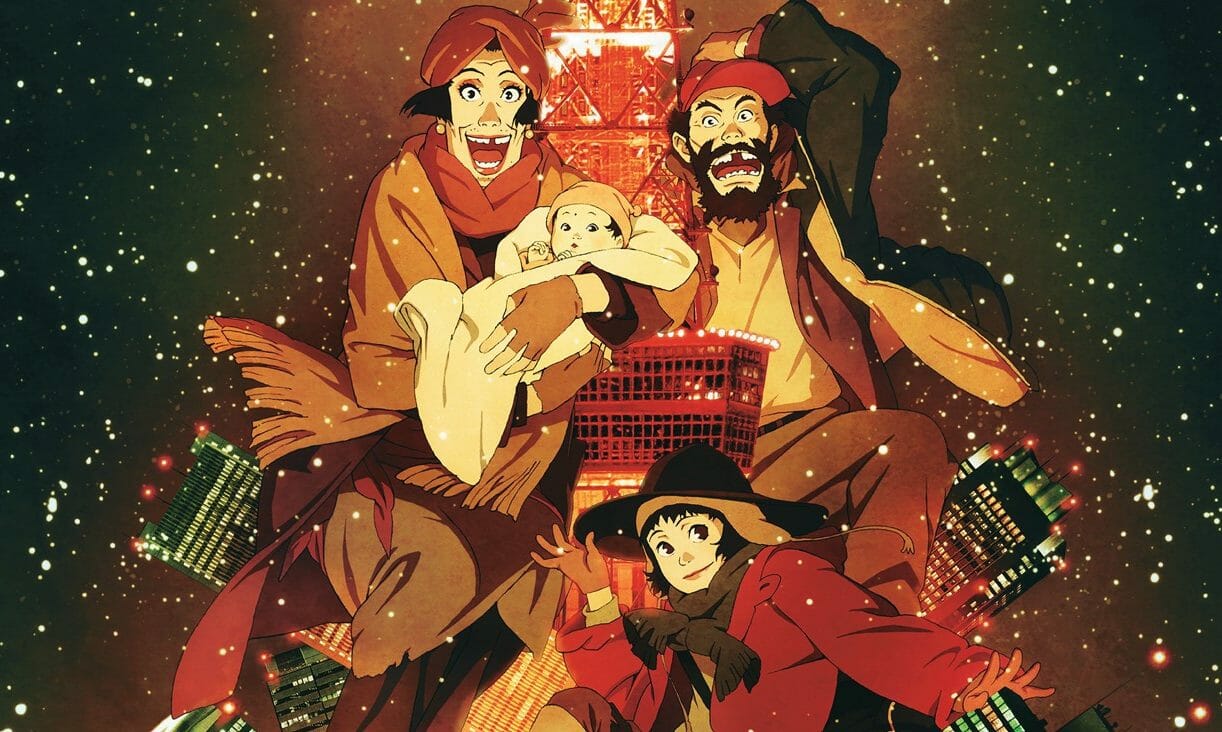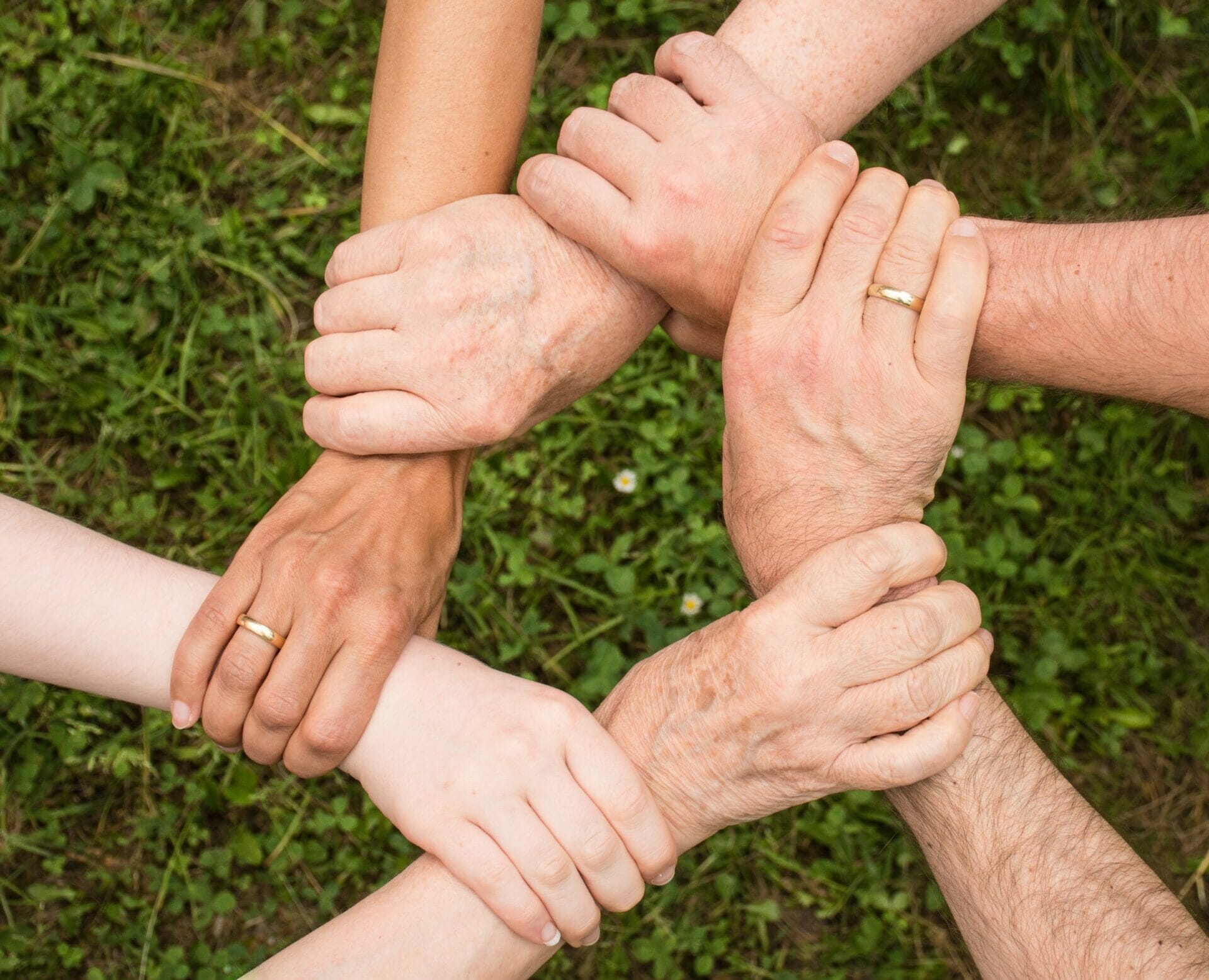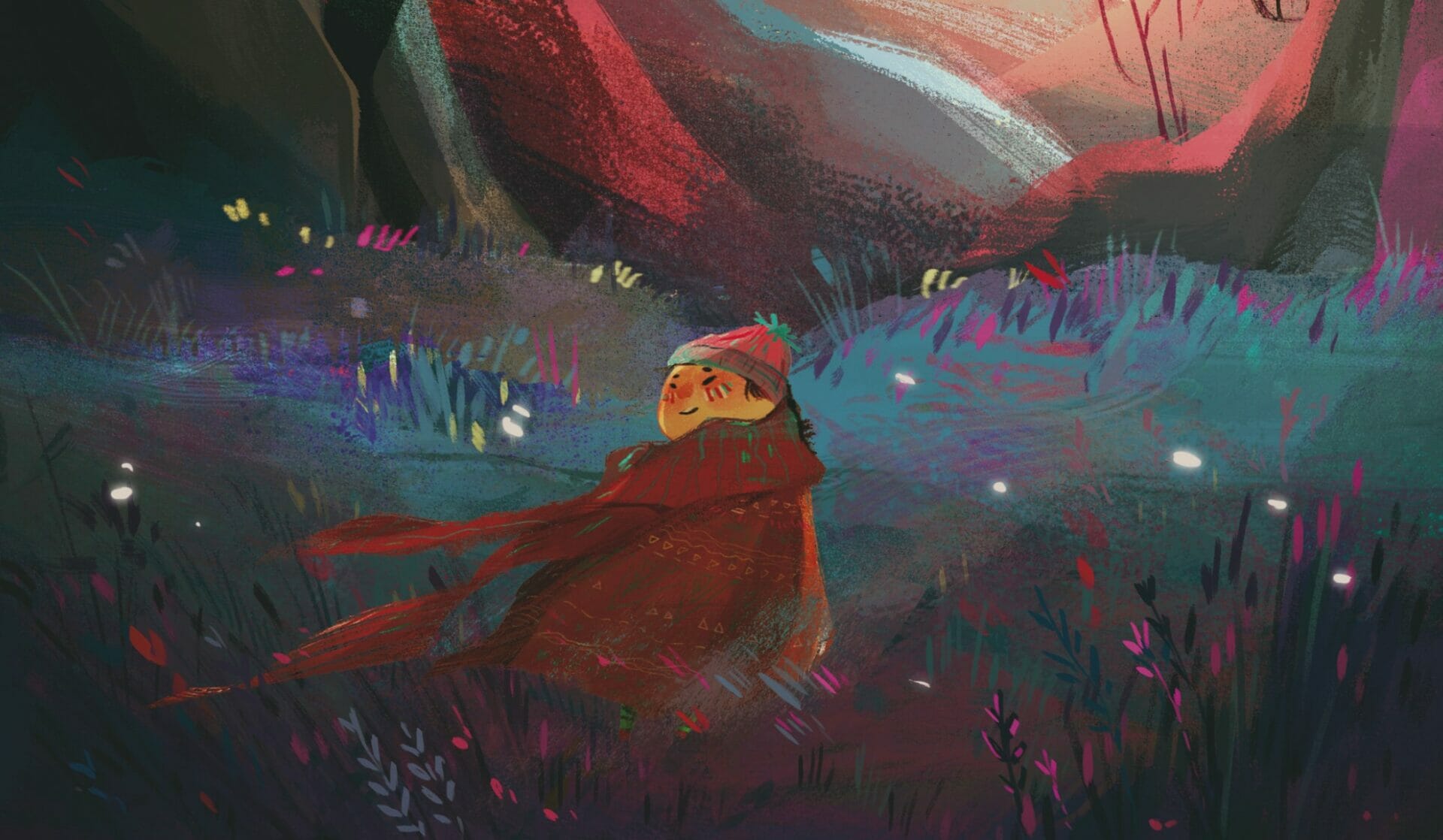
Tokyo Godfathers | A Christmas Movie Full of Depth
Year
Runtime
Director
Country
Format
Genre
Subgenre
Released in 2003, Tokyo Godfathers is Japanese director Satoshi Kon‘s third movie. It opens with what appears to be a special Christmas event for homeless people. Specifically, the movie starts with a scene from a Nativity play representing the arrival of the Three Wise Men at the stable where Jesus was born. The performance is instantly followed by a Christian priest’s sermon. He vehemently explains:
Nothing is harder than to have no place, but many are those without one. In their solitude, they long for someone who will say, ‘I want you to be here.’ Jesus was born to offer those alone a place in which to be alive!
From Tokyo Godfathers
These opening few minutes set the tone for the rest of the movie. Tokyo Godfathers is a lighthearted Christmas animation, filled with Christian undertones and happy coincidences, or rather Christmas miracles. However, beneath its simple story, Tokyo Godfathers is a movie full of depth. Its complex narrative presents a realistic and unapologetic depiction of the city of Tokyo and its inhabitants.
The title of the movie is a reference to John Ford‘s 1948 Western movie 3 Godfathers, from which Tokyo Godfathers is loosely inspired.
Three Godfathers
Tokyo Godfathers follows three homeless people, Gin (Tôru Emori), Hana (Yoshiaki Umegaki), and Miyuki (Aya Okamoto) on their journey across Tokyo. After finding an abandoned newborn in rubbish bins on Christmas Eve, they start searching all over the city for the baby’s parents. Rescuing the baby forces them to look back at their own pasts and to grow into a more empathetic version of themselves.
Tokyo Godfathers won the Excellence Award at the 7th Japan Media Arts Festival and the Animation Film Award at the 58th Mainichi Film Awards.
Depth in lightness
At first glance, Tokyo Godfathers appears to be a Christmas fairy tale for a younger public, similar to Charles Dickens‘ famous 1843 novella A Christmas Carol. Nothing as surreal as ghosts appear in the movie, but lucky coincidences save the main characters several times. Although it features more somber themes such as abandonment and homelessness, these are treated in a more lighthearted way. Above all, Tokyo Godfathers’ story teaches a moral: to stay kind despite one’s circumstances.
I wanted to send my message to viewers throughout this feature, to make them feel relieved from their troubles, worries, and discontentment from everyday life by using the ‘homeless’ characters who are a socially disadvantaged people that are living their lives vitally and lively with warm and kind hearts.
Satoshi Kon in an interview with the Austin Chronicle
Yet, Tokyo Godfathers is a movie full of depth that may not even be suitable for children. Beneath its heartwarming surface, it portrays a cold, harsh city brimming with danger. The main characters alternately encounter kindness and threats. Scenes filled with warmth and jokes follow moments of despair. The movie reminds the viewer that violence can always be found at the corner. As Hayao Miyazaki did in Spirited Away, Satoshi Kon uses a simple animation style and light storytelling in order to tackle complex themes.
The importance of family
The main characters in Tokyo Godfathers are neither good nor bad. Gin is a middle-aged alcoholic with a past he does not want to take responsibility for; Hana is a transgender woman who selfishly wanted to raise a baby she cannot care for because she wishes to be a mother; Miyuki is a runaway girl with a bad temper who does not hesitate to tell her companions that she has a home where she can return to anytime she wants. Nevertheless, they do not shy away from helping each other out, sharing a small shelter, and bringing each other food. When Hana decides to find the baby’s parents, her companions, who would have preferred to take the abandoned newborn to a police station, follow her anyway.
The important thing wasn’t to just present the homeless problem in the script, but to focus on the mindset surrounding things we “discard.” These are people who have been “discarded” from society; the homeless, the runaway girl. In Japanese society, civil rights that the people have are few in number. I wanted to examine how someone separated from mainstream society would once again rejuvenate society.
Satoshi Kon in an interview with Anime News Network
Tokyo Godfathers is also a movie about family. The organic one, consisting of two parents and their children, but also the made-up one. Similar to the Wachowski sisters‘ Netflix TV show Sense8, it seeks to show the different bonds that unite people. Although discarded by society, Gin, Hana, and Miyuki are not alone. They help each other and work together. The three, not bound by blood ties but by companionship and solidarity, nevertheless form what can be considered a family.
Realism through details
With Tokyo Godfathers, we intentionally made the story simple and focused on exposing the background of the characters more.
Satoshi Kon in an interview with Anime News Network
Nowadays viewers more accustomed to full-motion or 3D animation might consider the art in Tokyo Godfathers as simplified. However, the drawings required a great deal of attention. Kon wanted the movie to contain as many details as possible. The illustrators drew every detail, such as the neon signs in the background. Most importantly, the images used multiple layers instead of a single one. These techniques allowed the motion of various elements at a different speed, creating a more realistic movement.
The art reflects the objective of the movie: to use simplicity in order to focus on details. Such as the usage of multiple layers to produce a single image, all the information gathered about the characters adds complexity to the story. In conclusion, it is all these elements that make Tokyo Godfathers a movie rich in depth.
Satoshi Kon is best known for his psychedelic movies – such as Perfect Blue (1997), Millenium Actress (2001), and Paprika (2006) – in which reality, dreams, and memories merge together. Kon’s previous knowledge and his accurate portrayal of the human psyche make Tokyo Godfathers a lighthearted, enjoyable, and deep animation. By showing the motives and histories of his characters, Kon reminds the viewer of the complexity of human beings. Most of all, Tokyo Godfathers teaches a valuable lesson: strength can be found through unity.
Tag
Buy a ☕ for Hypercritic








